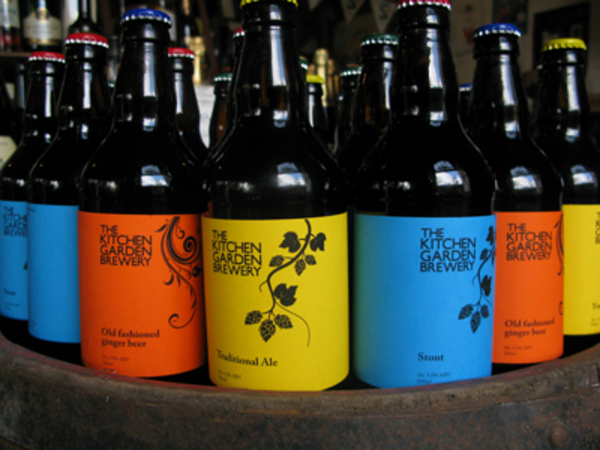Irony on the iron track: Beeching Way heralds start of revamped Bluebell line
Added: Saturday, August 24th 2013
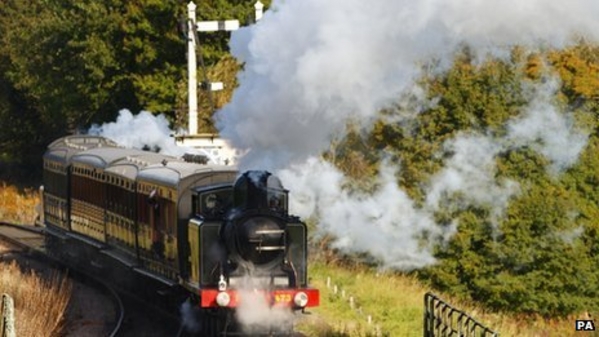
It’s ironic that the road leading to East Grinstead station -- the new terminus of the Bluebell Railway -- is called “Beeching Way”, but the preserved line was already running by 1960, three years before Dr Beeching published his infamous report that led to the dismantling of much of Britain’s railways.
The line, running from East Grinstead in West Sussex to Sheffield Park in East Sussex, was once part of the East Grinstead to Lewes line. It closed in 1958, and when it reopened, running steam engines, it became the first standard gauge preserved railway in the world. The only preserved railway that existed before it was the narrow gauge Talyllyn railway in Wales.
2013 marks a landmark year for the line as it is reconnected to East Grinstead, which serves trains to Croydon and London for the first time since the 1960s. This allows for journeys of ease for rail enthusiasts and beer fans, who may wish to couple the smell of steam and the taste of beer by visiting some of the fine pubs in the area. £11 million was raised by volunteers to fund the upgrading of the line.
The journey begins at East Grinstead. If the Bluebell Railway was a time warp this would be the portal. The modern station sits next to a Sainsbury’s store, for the illusion of travelling along Britain’s railways of old only begins once the train heads down the line. But this only adds to the experience and doesn’t detract from the beauty of the historic town. Much of East Grinstead’s past remains intact. This is seen when you walk down the broad Tudor High Street, where houses with exterior wooden beams cling on to overhanging upper storeys. The road ends at Sackville College, a sandstone manor house built in the 1600s where the Christmas carol Good King Wenceslas was composed.
The nearby Ashdown Forest has strong literary connections as it’s the setting for A A Milne’s popular children’s stories involving Winnie the Pooh and his friends in the Hundred Acre Wood.
In the centre of East Grinstread’s High Street, the Dorset Arms (www.dorsetarms.co.uk; 01342 316363) is an attractive building attached to the end of one of the longest rows of timber-framed buildings in the country. Food is served daily and you could also enjoy a pint of Greene King IPA and Abbot, Morland Original or guest ales that change regularly.
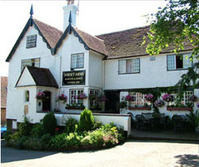
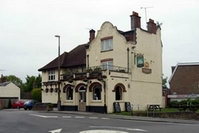
At the other end of the High Street nearest the station, a 10-minute walk leads to fork in the road and on each of these roads there are two good pubs. On Ship Street we find the Ship Inn (www.shipinneastgrinstead.co.uk) where you can indulge in a selection of ales including Young’s Bitter and Special, Wells Bombardier and St Austell Tribute Ale.
If instead you chose to travel down West Street you’d be greeted by the Sussex Arms (www.shepherdneame.co.uk/pubs/east-grinstead/sussex-arms), a historic pub that’s believed to be one of the oldest in town. Run by England’s oldest brewery, Shepherd Neame, it serves the Kent brewery’s regular and seasonal beers.
The Bluebell Railway has the largest collection of steam locomotives in the country after the National Railway Museum in York. It houses more than 30 engines in its collection with up to 10 in operation at any one time. It’s of no surprise that the line runs trains from different eras, with engines in London, Brighton and South Coast liveries portraying how the line would have looked prior to 1921, with matching carriages, as well as pre-war Southern and post-war British Railways trains.
Leaving East Grinstead we cross Imberhorne Viaduct, a 700 foot-long and 90 foot-high bridge spanning the river of the same name, allowing for a fine panorama of the Sussex countryside. The stations on the line represent different eras as well showing different architectural styles from the steam era. The next station that we arrive at swiftly after leaving East Grinstead has been restored to the British Railways era of the 1950s and functions as a remote, rural station serving no town. Kingscote station marked the end of the line until just this year and even if few people join the train here, the scene of a quiet country station in green and cream Southern colours with a beautifully kept garden serves the line well.
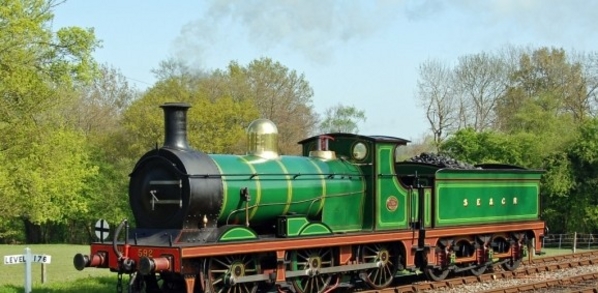
This is in stark contrast to the former junction at Horsted Keynes, forming a station far bigger and busier than heritage railway enthusiasts have become used to. Before then we must journey through West Hoathly tunnel, the longest on a preserved line in Britain, where the carriages become dimly lit and the open windows allow for the smell of steam to penetrate. The station has five platforms as it once served a junction with the branch from Haywards Heath. It has large canopy roofs and has been restored to portray the 1920s era of Southern Railways, the golden age of steam. Despite its large size, the station is only slightly less remote than Kingscote, with Horsted Keynes village a 20 minute walk away and a bus service to and from the station that only operates on Saturdays. In spite of these transport problems, a visit to the village is well worth the effort. It’s a place of some antiquity, with a 900 year-old Norman church where former Prime Minster Harold Macmillan is buried: his house, Birch Grove, is in the area and President John F Kennedy stayed there shortly before his assassination.
In the centre of the village is a green surrounded by cosy cottages fronted by carefully kept hedge rows and picket fences with a red telephone box in close proximity to the two pubs that sit either side. On the left of the green coming into the village you find the Green Man (01825 790656), a historic pub where the village stocks were believed to have been sited. It’s owned by Greene King and serves IPA, Abbot Ale and Hardys and Hansons and guest ales. On the opposite side of the green is the Crown (www.thecrown-horstedkeynes.co.uk), a pub that dates to the 1500s serving Harvey’s Sussex Best Bitter, seasonal Harvey’s beers and a guest ale. All the more reason to make the journey from the station to the village is the fact that Mark Raffan is head chef, a former Michelin star holder. The pub also offers accommodation.
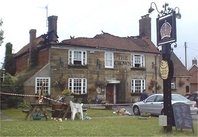
Arguably the most scenic stretch of the line comes now as the train meanders through cuttings with views of Sussex vineyards, a pleasant sight if you’re lucky enough to get a spot in the observation car. Sheffield Park, the last stop, is in keeping with the time-warp effect of the line that starts in a modern city and takes us via a sleepy 1950s country station and a busy 1920s junction to a bustling Victorian terminus. The large locomotive shed is not to be missed. The railway can’t keep its massive collection of engines in operation all at once and the 20 or so that aren’t currently in use can be viewed here, and you’re allowed as close as you can get without touching.
The station was built for the Earl of Sheffield, whose land is now National Trust property (www.nationaltrust.org.uk/sheffield-park-and-garden). With its network of man-made lakes and vast collection of trees from around the world in a garden designed by Capability Brown, it makes for a great attraction and is well within walking distance of the station. It was common for railways to have stations built for sponsors of the line such the earl, which gives us an interesting historical insight. Of special interest to beer drinkers is the one barrel micro-brewery established in the park in 2012. The Kitchen Garden Brewery (the Old Walled Garden, 01825 790 775; www.kitchengardenbrewery.co.uk) produces a range of bottle-conditioned beers, including Mild, Best Bitter, Golden Ale, Stout and Orange Hefeweizen that are available in the park shop.
For more information about the railway visit www.bluebell-railway.com. Train images courtesy of the Bluebell Line.
